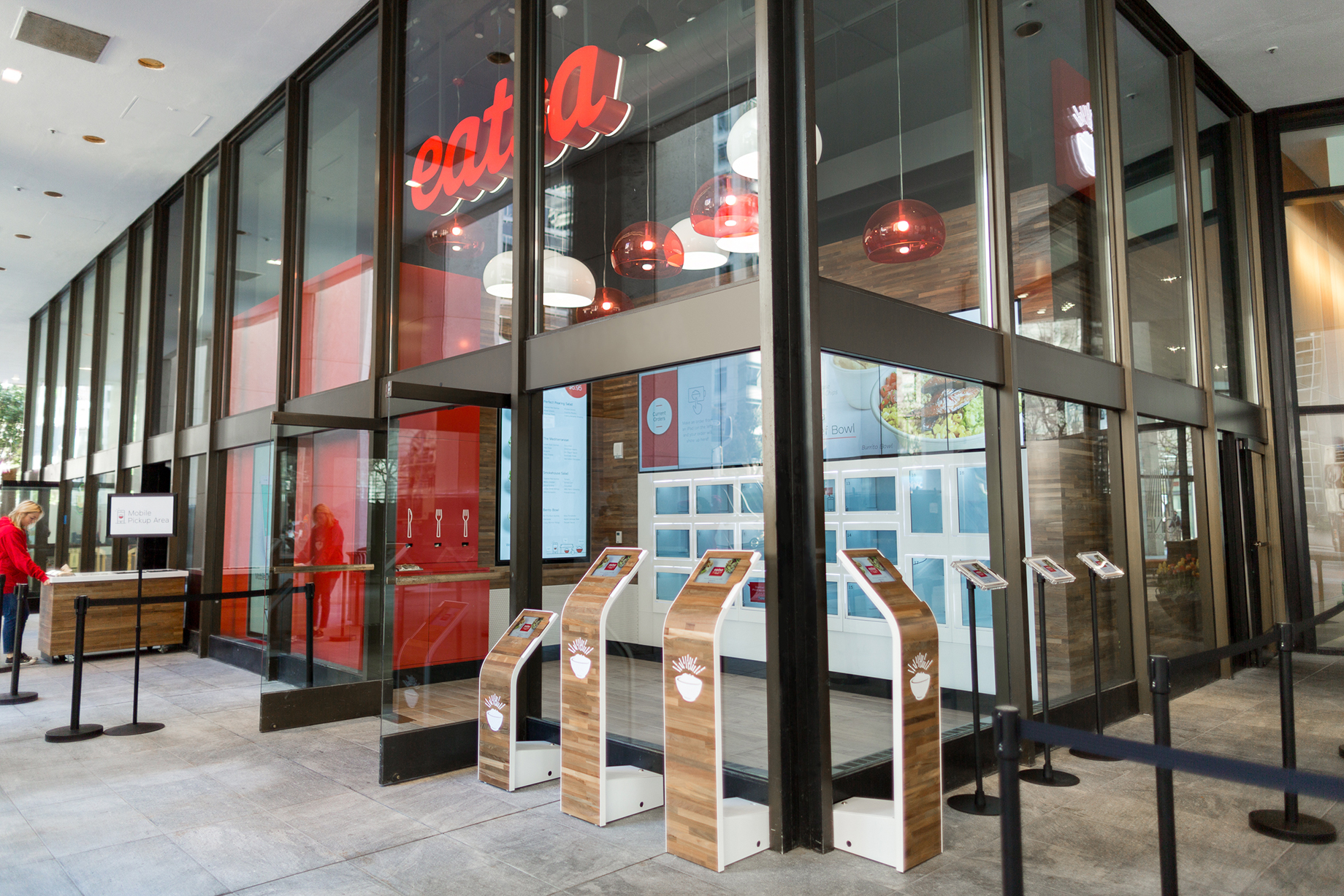Eatsa, a fast-casual restaurant chain that sells bowls of quinoa using an automat-style, self-serve ordering process — the chain has been called a “robot restaurant” concept like something out of The Jetsons — has branched out from its San Francisco home with units in New York City and Washington, D.C., over the past 12 months. Diners place orders and pay for them on iPads installed at kiosks. The orders are filled by people behind the scenes and delivered through a collection of clear compartments that display the customer’s name along with personalized messages. Advance orders may be placed by mobile app.

In only its second year in business, Eatsa is already operating seven units in all. The restaurants offer 32 varieties of quinoa bowls and other options, including salads, bento boxes and burrito bowls, along with seasonal menus. Its second New York City restaurant opened this year, and the company says it has plans for more of them there. Typically, the restaurants measure about 3,000 square feet.
Eatsa opened its first automated restaurant in San Francisco’s financial district in August 2015. Founder David Friedberg, a former Google programmer with a degree in astrophysics, says the automated ordering system cuts down on labor and real estate costs and can generate some 600 to 700 orders per hour. As a result, he says, the customer can be charged $6.95 for a quinoa bowl, about 30 or 40 percent less than he or she might pay at, say, Chipotle.
Though some might associate the concept with some sort of potential “robo-calypse” — with robots taking over basic food-service functions — others see the wave of the future. “Today’s busy consumer is focused on convenience and simplicity, and this concept offers both on a variety of levels,” said Ashley Casey, emerging-trends accounts leader at Phillips Edison & Co. “To landlords, the design is also minimalistic, for a lower build-out cost, and allows for a steady influx of customers. Retailers and restaurants like Eatsa are maximizing technological trends to welcome and attract today’s fast-paced customers.”
By Ben Johnson
Contributor, Commerce + Communities Today


